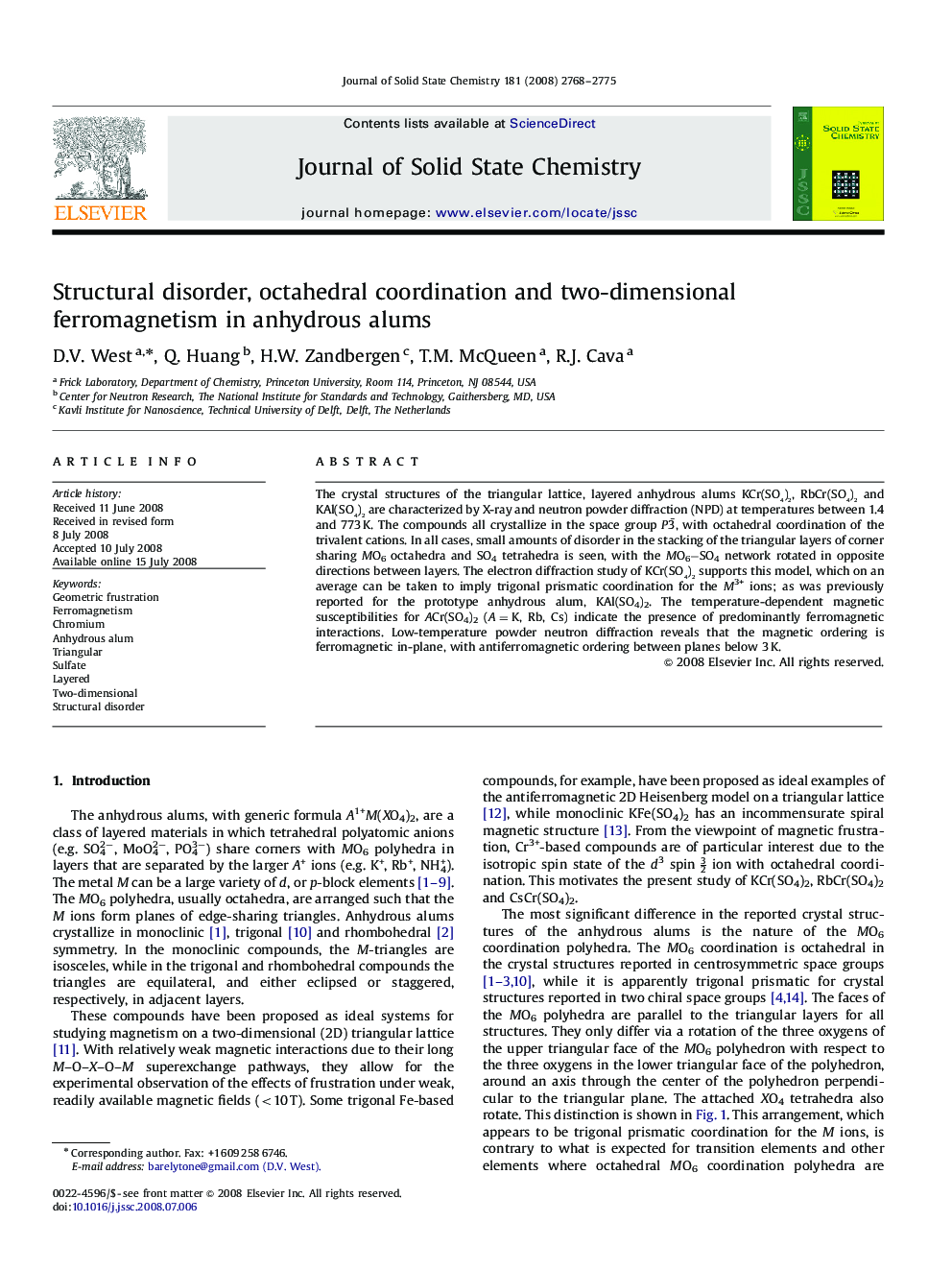| کد مقاله | کد نشریه | سال انتشار | مقاله انگلیسی | نسخه تمام متن |
|---|---|---|---|---|
| 1332031 | 979027 | 2008 | 8 صفحه PDF | دانلود رایگان |

The crystal structures of the triangular lattice, layered anhydrous alums KCr(SO4)2, RbCr(SO4)2 and KAl(SO4)2 are characterized by X-ray and neutron powder diffraction (NPD) at temperatures between 1.4 and 773 K. The compounds all crystallize in the space group P3¯, with octahedral coordination of the trivalent cations. In all cases, small amounts of disorder in the stacking of the triangular layers of corner sharing MO6 octahedra and SO4 tetrahedra is seen, with the MO6−SO4 network rotated in opposite directions between layers. The electron diffraction study of KCr(SO4)2 supports this model, which on an average can be taken to imply trigonal prismatic coordination for the M3+ ions; as was previously reported for the prototype anhydrous alum, KAl(SO4)2. The temperature-dependent magnetic susceptibilities for ACr(SO4)2 (A=K, Rb, Cs) indicate the presence of predominantly ferromagnetic interactions. Low-temperature powder neutron diffraction reveals that the magnetic ordering is ferromagnetic in-plane, with antiferromagnetic ordering between planes below 3 K.
The anhydrous alums KCr(SO4)2, RbCr(SO4)2 and KAl(SO4)2 are characterized by X-ray and neutron powder diffraction and TEM diffraction. All compounds have octahedral coordination of the trivalent cations. Stacking disorder is observed, with the MO6−SO4 network of polyhedra rotated in opposite directions between layers. Low-temperature NPD reveals ferromagnetic in-plane ordering, with antiferromagnetic ordering between planes below 3 K.Figure optionsDownload as PowerPoint slide
Journal: Journal of Solid State Chemistry - Volume 181, Issue 10, October 2008, Pages 2768–2775